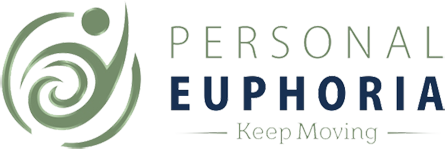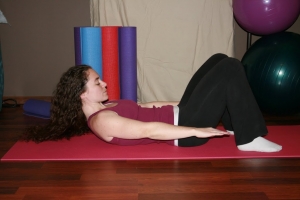Even an exercise like ab prep–it seems easy, but it’s not at all. You are basically lifting your head and shoulders off the floor. Many people mistake it for an abdominal crunch, but the exercise is so much more, and once you discover all the intricacies, you can find what may seem like the simplest exercise extremely rewarding.
It may not happen right away. Discovering what your body can and can’t do can take years and can change over time. And sometimes one break through somewhere leads to another discovery of an unexpected strength or weakness. I recently had one such discovery in my own body. It was truly a revelation to me, especially as someone who feels like I should know my body fairly well. But that’s the genius of the human body, it never fails to surprise me.
The discovery didn’t actually come during a pilates class, although if I’d been listening closer to my body, I might have noticed earlier. The revelation came when I was running the Ragnar relay. Almost everyone on my team after running a lot of hills complained about their glutes hurting them. My glutes didn’t hurt at all. My hip flexors were on fire. It got me thinking…why was I the only one whose glutes didn’t hurt? It seemed unlikely that my butt was that much stronger than everyone else’s butt.
Now let’s step back a few years. Two or three years ago, I was having hip pain if I had to sit for more than twenty minutes. I went for physical therapy and nearly laughed at the PT when she told me that my right glute was weak. “Have you seen my glutes?” I asked, and I think I might have actually laughed out loud. In case you haven’t seen my derrière, it isn’t exactly petite. But she was right. I did all the glute exercises and hip flexor stretches she recommended and in three weeks I was pain free and felt like my glutes were good to go. And so I let them go.
That is the real reason that my teammates’ glute pain piqued my interest. And then I realized from running and having a friend watch me run, that my legs don’t swing behind me when I run. I take tiny steps forward. I don’t use my hamstrings or my glutes at all to push off, and I have a very small stride. One the one hand, the fact that I run as much as I do like this is sort of amazing to me, but it probably explains why I’m such a slow runner.
It’s in my personal pilates classes that I’m really working on strengthening my glutes (although it comes with strengthening and lengthening a number of other muscles). It’s never as simple as we might like. And suddenly exercises that I have done for years are difficult on a whole new level.
Okay, perhaps in this case it’s because I’ve discovered a weakness, but the truth is, they were easy before because other muscles were compensating. When the right muscles are doing the right job in pilates every exercises is hard, no matter how strong you are. That’s why we don’t need to do more than twelve of anything. And we typically only do eight to ten repetitions in pilates.
It’s one of the reasons I love pilates more and more every day. Pilates is tough and there is always something to discover. That’s the reason I love movement in general. So get moving, and see what you feel. Your body may not feel the same in years to come. It may not feel the same tomorrow.


If you get into the habit of getting your core workout in whenever your baby is napping, you’ll soon see drastic results. Here are three exercises you can do during that nap time that will supercharge your day and leave you feeling and looking your best.